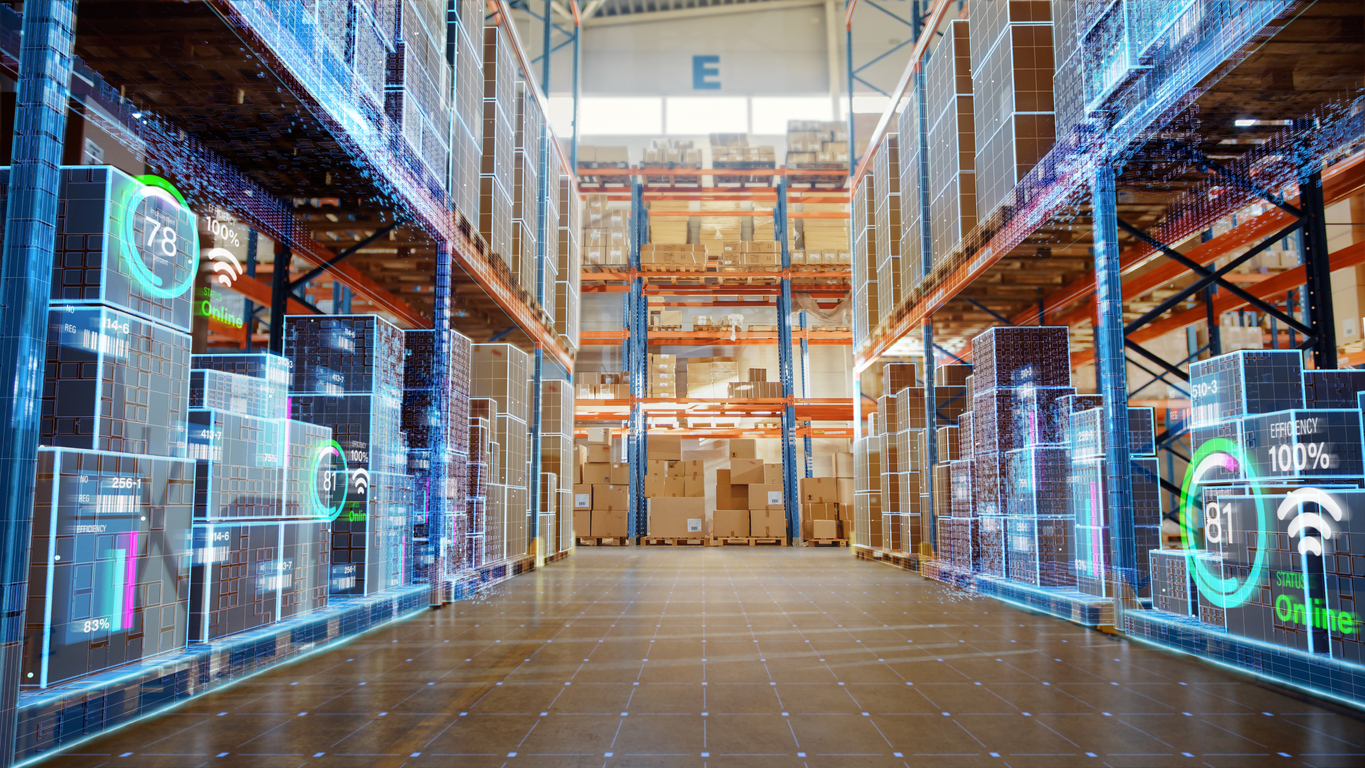Why Visible Supply Chain Management is Crucial for Modern Businesses
Why Visible Supply Chain Management is Crucial for Modern Businesses
In today’s fast-paced and ever-evolving business landscape, staying ahead of the competition is more crucial than ever. And one key aspect that can make or break a company’s success is supply chain management. But what exactly does it mean to have a visible supply chain? Well, imagine having real-time insights into every step of your product’s journey – from raw materials to manufacturing, warehousing to distribution. Sounds like an impossible dream? Think again! In this blog post, we will delve deep into why visible supply chain management is not just important but absolutely vital for modern businesses looking to thrive in an increasingly complex global marketplace. So buckle up and get ready for some eye-opening revelations that will revolutionize the way you approach your supply chain!
Introduction to Supply Chain Management
Introduction to Supply Chain Management
Supply chain management (SCM) is the process of managing the flow of goods and services from the point of origin to the point of consumption. It involves coordinating and integrating various activities such as sourcing, procurement, production, inventory management, logistics, and distribution in order to create value for customers while minimizing costs.
In today’s fast-paced business environment, where customer expectations are constantly evolving and competition is fierce, having an efficient supply chain has become crucial for modern businesses. The success or failure of a company often depends on its ability to effectively manage its supply chain.
The Evolution of Supply Chain Management
Supply chain management has come a long way since its inception in the early 1980s. Initially, it was seen as a cost-saving measure aimed at improving efficiency. However, over time it has evolved into a strategic function that drives growth and creates competitive advantage for companies.
Today, SCM is not just about managing physical products but also includes the flow of information and finances along with goods. This has been made possible by advancements in technology which have enabled real-time tracking and monitoring of products throughout the supply chain.
The Key Components of Supply Chain Management
There are several key components that make up supply chain management. These include:
1. Procurement: This involves sourcing raw materials or finished products from suppliers who offer competitive prices while maintaining quality standards.
2. Production: This refers to the manufacturing process where raw materials are transformed into finished goods.
The Importance of Visibility in Supply Chain Management
The supply chain is the backbone of any business, responsible for managing the flow of goods and services from raw materials to end products. In today’s fast-paced business environment, visibility in supply chain management has become a crucial aspect for the success of modern businesses. It refers to the ability to track and monitor every step of the supply chain, from procurement to delivery.
Visibility in supply chain management provides businesses with real-time insights into inventory levels, production processes, and shipment status. This level of transparency allows companies to identify potential bottlenecks and address them promptly before they escalate into costly issues. Here are some key reasons why visibility is essential in supply chain management:
1. Predictive Planning:
With visibility comes predictability. By having a clear view of all activities within the supply chain, businesses can anticipate demand fluctuations and plan accordingly. This proactive approach enables companies to optimize their inventory levels, reduce lead times, and avoid stockouts or excess stock situations.
2. Improved Efficiency:
Visibility in supply chain management leads to improved efficiency by streamlining operations across different departments such as procurement, manufacturing, warehousing, and transportation. With real-time data on hand, managers can make informed decisions that eliminate delays and improve productivity throughout the entire supply chain.
Benefits of Visible Supply Chain Management for Businesses
Visible supply chain management (VSCM) has become an increasingly vital aspect for businesses in today’s fast-paced and competitive market. It refers to the ability of a company to track and monitor all aspects of its supply chain, from the sourcing of raw materials to the delivery of finished products to customers. This means having a transparent and real-time view of all processes, inventory levels, and logistics operations.
The benefits of implementing VSCM are numerous, ranging from improved efficiency and cost savings to enhanced customer satisfaction. In this section, we will explore some of the key advantages that VSCM can bring to modern businesses.
1. Increased Efficiency: One of the main benefits of VSCM is its ability to streamline operations and improve efficiency throughout the supply chain. By having visibility into every step of the process, businesses can identify any bottlenecks or inefficiencies and take corrective actions promptly. This leads to faster production cycles, reduced lead times, and improved overall productivity.
2. Cost Savings: With greater visibility comes better control over costs. By closely monitoring inventory levels, transportation costs, and supplier performance, companies can identify areas where they can cut down on expenses without compromising on quality or service levels. For example, using real-time data on inventory levels can help prevent overstocking or stockouts which can result in unnecessary costs.
Challenges in Implementing Visible Supply Chain Management
Implementing a visible supply chain management system can bring numerous benefits to modern businesses, such as increased efficiency, cost savings, and improved customer satisfaction. However, the process of implementing this type of system can also come with its own set of challenges. In this section, we will discuss some common challenges that companies may face when trying to implement visible supply chain management and how to overcome them.
1. Resistance to Change:
One of the biggest challenges in implementing a visible supply chain management system is resistance from employees who are used to working with traditional methods. This could be due to the fear of losing their jobs or not being able to adapt to new technology. To overcome this challenge, it is crucial for businesses to involve their employees in the implementation process from the beginning. By explaining the benefits and providing training on how to use the new system effectively, employees are more likely to embrace change and become advocates for it.
2. Lack of Data Quality:
Visible supply chain management relies heavily on accurate data collection and analysis. However, many organizations struggle with maintaining high-quality data across different systems and departments. This can lead to errors in forecasting demand or inventory levels and result in inefficient operations. To tackle this issue, companies should invest in data management tools and establish standard operating procedures for data entry and maintenance.
Strategies for Achieving Visibility in the Supply Chain
Visibility in the supply chain refers to the ability to track and monitor the movement of goods and information throughout the entire supply chain, from raw materials sourcing to end-customer delivery. With the growing complexity of global supply chains, achieving visibility has become crucial for modern businesses. It allows companies to make informed decisions, improve operational efficiencies, and enhance customer satisfaction.
Here are some strategies that can help businesses achieve visibility in their supply chain:
1. Utilize Technology: The first step towards achieving visibility in the supply chain is investing in technology. With advancements in digital technologies such as cloud computing, artificial intelligence (AI), and Internet of Things (IoT), businesses now have access to real-time data and analytics that can provide insights into their supply chain operations. Implementing a robust Supply Chain Management System (SCMS) can help streamline processes, optimize inventory levels, and improve forecasting accuracy.
2. Collaborate with Suppliers: Building strong relationships with suppliers is essential for achieving visibility in the supply chain. By collaborating closely with suppliers, businesses can gain access to timely updates on inventory levels, production schedules, and potential disruptions. This enables them to proactively plan and respond to changes in demand or unexpected events like natural disasters or transportation delays.
Future of Visible Supply Chain Management and Emerging Technologies
The future of supply chain management is rapidly evolving, thanks to the emergence of new technologies. These advancements have not only transformed the way businesses operate, but also how they manage their supply chains. In today’s fast-paced market, it has become crucial for businesses to have visibility into their entire supply chain process, from sourcing materials to delivering products to customers.
One of the biggest drivers of change in supply chain management is the increased use of data and analytics. With the help of advanced data analytics tools, companies can now gather and analyze real-time data from different stages of the supply chain. This enables them to identify inefficiencies and bottlenecks, make informed decisions and improve overall performance.
Another emerging technology that is set to revolutionize supply chain management is artificial intelligence (AI). AI-powered systems can automate various processes such as demand forecasting, inventory management, and even route optimization for deliveries. This not only saves time but also reduces human error and increases efficiency.
Internet of Things (IoT) devices are also playing a significant role in shaping the future of visible supply chain management. From sensors on shipping containers that track location and temperature, to RFID tags on individual products that provide real-time visibility throughout the entire delivery process – IoT is making it possible for businesses to have a complete view of their supply chain in real-time.
Conclusion: How to Implement Visible Supply Chain Management in Your Business.
Conclusion: How to Implement Visible Supply Chain Management in Your Business
Now that we have discussed the importance of visible supply chain management for modern businesses, let’s explore how you can implement it into your own business operations.
1. Define your supply chain objectives and goals: The first step to implementing visible supply chain management is to clearly define what you want to achieve with it. This could include improving transparency, reducing costs, or increasing efficiency. Having a clear understanding of your objectives will help guide your implementation strategy.
2. Map out your supply chain: The next step is to map out your entire supply chain from start to finish. This includes identifying all the suppliers, manufacturers, distributors, and retailers involved in producing and delivering your products or services. This mapping exercise will give you a comprehensive overview of your supply chain network and help identify any potential bottlenecks or areas for improvement.
3. Utilize technology: Technology plays a crucial role in implementing visible supply chain management. There are various software solutions available that can help you track and monitor every aspect of your supply chain in real-time. These tools can provide visibility into inventory levels, production processes, transportation routes, and delivery timelines.
4. Collaborate with suppliers and partners: To truly achieve visibility across the entire supply chain, it is essential to collaborate with all stakeholders involved. This includes suppliers, manufacturers, distributors, retailers, and even customers.







Comments are closed.